
Muneteru Ujino
Solo Exhibition
Lost Frontier
2023.7.7-8.5
Open on Tue, Wed, Thu, Fri, and Sat. 12:00 – 18:00
Closed on Sundays, Mondays, and National holidays.
Opening Reception: 2023.7.7 (Fri.) 5pm-9pm
* The artist will also be in the gallery.
* The gallery will be open on July 9 (Sun.), during the run of TENNOZ ART WEEK and Tokyo Gendai.
* The CADAN Gendai Bijutsu 2023 exhibition held at Tennoz What Cafe is also scheduled to be open from July 8 (Sat.) – 10 (Mon.).

still from The Theme from Lost Frontier (2023)
We are pleased to announce the upcoming solo exhibition by Muneteru Ujino titled Lost Frontier at our gallery. This exhibition will run from July 7 (Fri.) to August 5 (Sat.).
Born in 1964, Muneteru Ujino makes installations with everyday electrical appliances, hair dryers, electric guitars, automobiles, and other such found objects. He puts together works and performances that contemplate the irony of the culture of mass waste that is bound to follow that of mass consumption in today’s society, as well as elements of imported culture, such as the rock and industrial music that entered Japan from the United States. In the process, he has continued to expand his range of expression.
Ujino espouses “research of material civilization” with do-it-yourself (DIY) technology. His works are composed of mass-produced goods symbolizing 20th-century-style development. Sometimes these are linked together in huge assemblages that manifest the overwhelming existence that only mono (material objects) have. From his experience at the Gambiólogos2.0 exhibition in Brazil, he knows the dictum that all industrial products are connected with war, and all DIY activity, with revolution, and has continued to produce works of art with DIY technology.
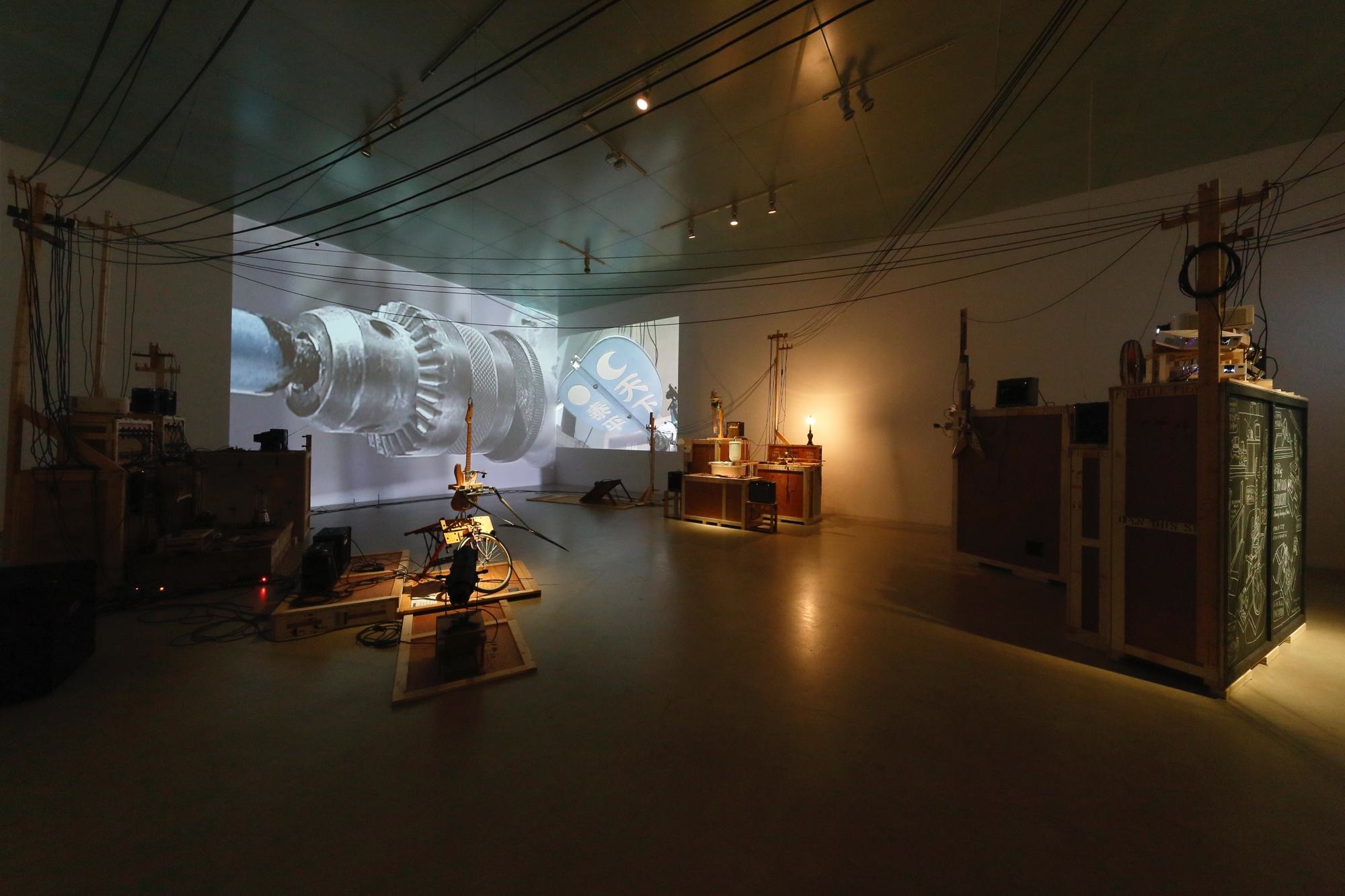
Plywood Shinchi (2017) Installation view, 21st Century Museum of Contemporary Art, Kanazawa, Ishikawa, 2017
Photo: Keizo Kioku
Ujino showed large-scale installations with a striking presence at the exhibitions Roppongi Crossing 2010: Can There Be Art? (Mori Art Museum, 2010), Yokohama Triennial 2017 Islands, Constellations & Galapagos (Yokohama Red Brick Warehouse No. 1, 2017), and Collection / Asian Landscapes (21st Century Museum of Contemporary Art, Kanazawa, 2018). Specifically, these works were The Rotators, a series of sound sculptures composed of electrical appliances and other articles; Plywood City, a series that transformed wooden crates used to transport works of art into a makeshift city; and Japan Series, a graphical depiction of the current situation in Japan, which has absorbed foreign-language concepts after converting the terms for them into katakana, respectively. Each of these works proceeded from a critical perspective on elements of imported culture and technology that were artificially incorporated into an Americanized postwar Japan.
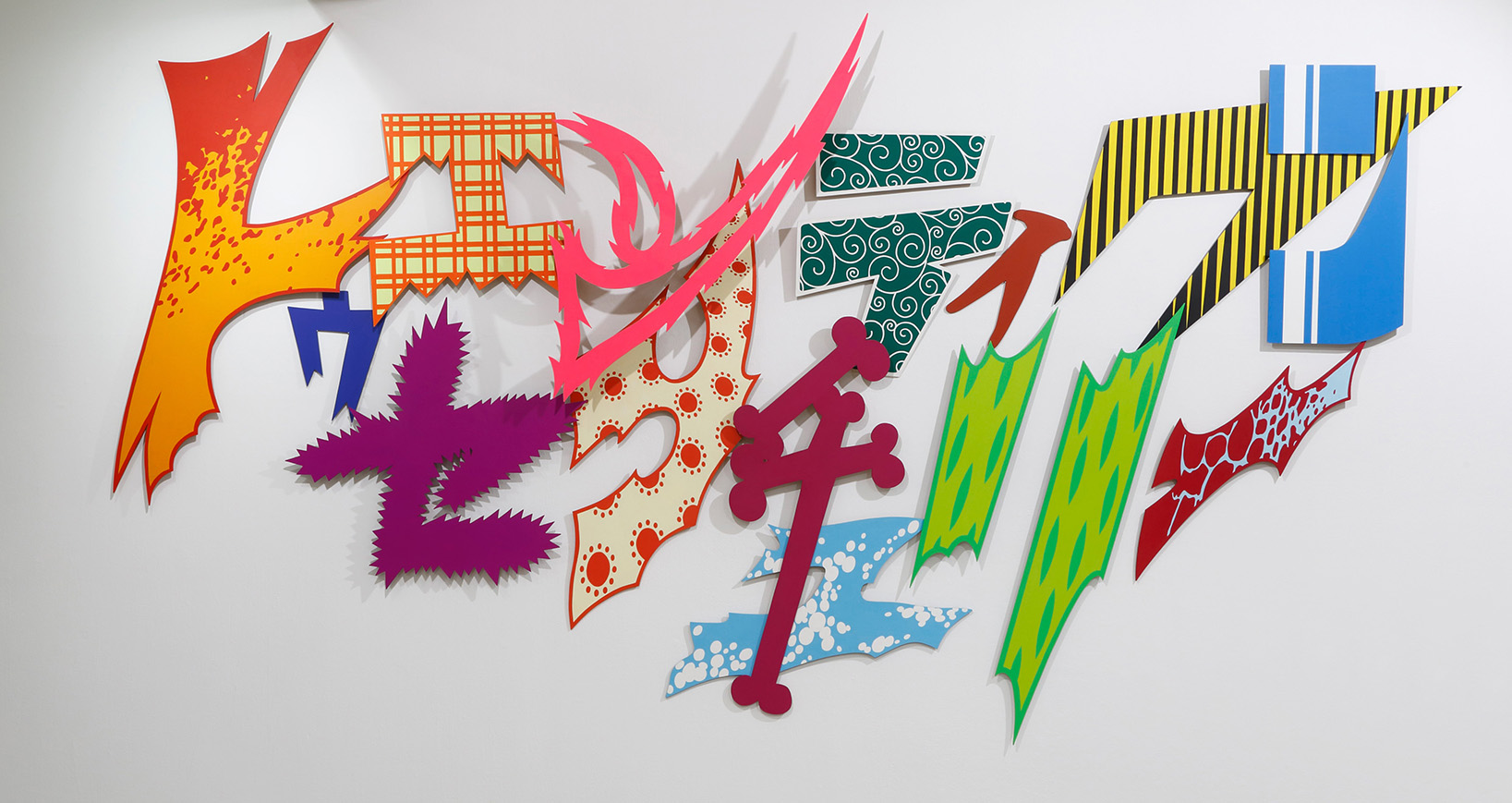
TWENTY ONE CENTURY (2002) acrylic on paper and plywood
In recent years, Ujino has also adopted working with illusions as an agendum and begun to make extensive use of flat-screen images. The video work Lives in Japan (2018) used the units composing the sound installation Plywood Shinchi (Plywood Frontier) as independent characters, shot their movements as a type of performance, and showed them on synchronized multiple displays. For Radiowave Quarter (2018), Ujino shot receivers catching shortwave radio broadcasts from various countries as live videos, and synchronized their multiple footage. Each of these works was a new attempt for him.
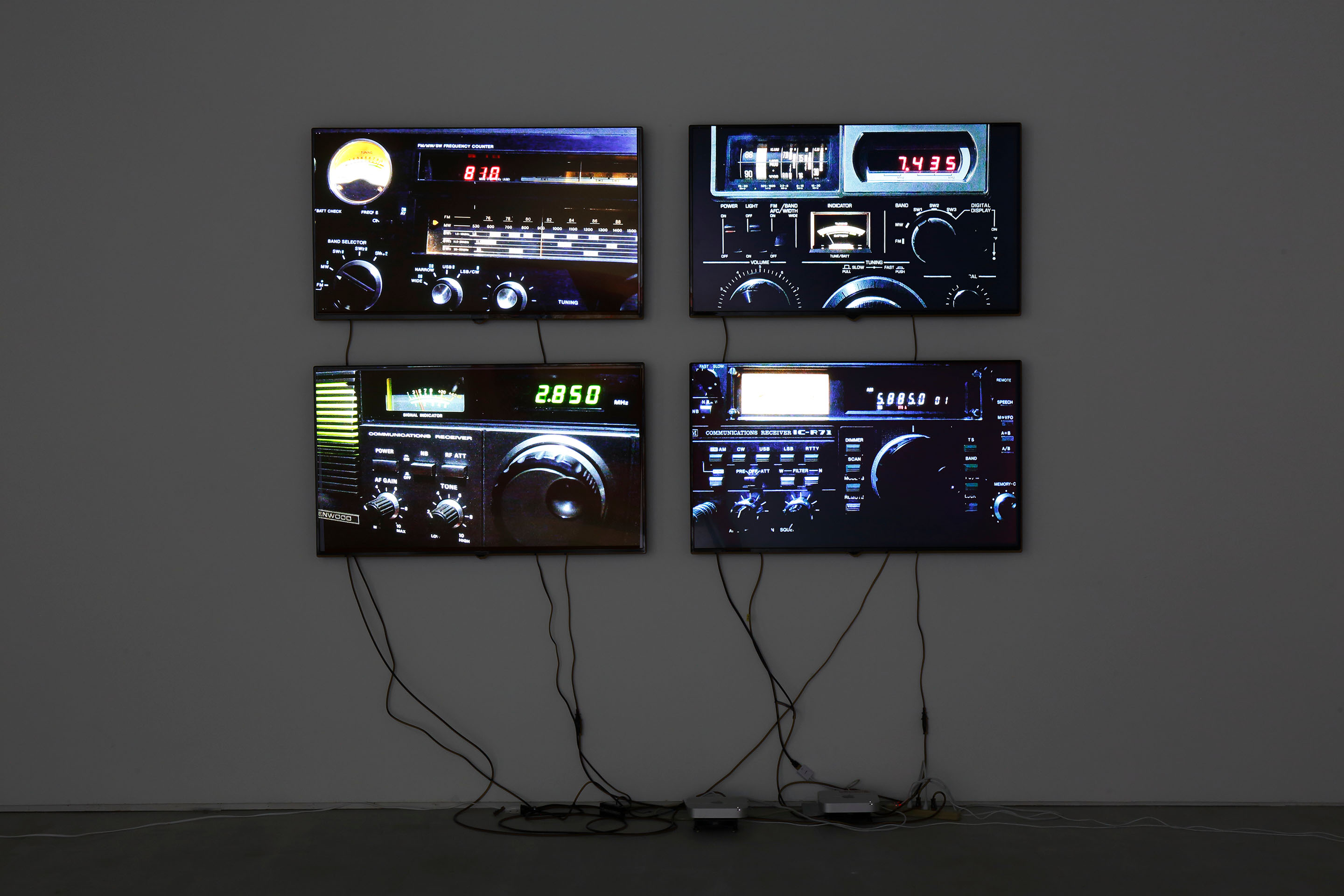
Radiowave Quarter (2018)
Video installation: 4ch synchronized video, 4ch sound
Photo: Keizo Kioku
The electrical appliances that “appeared” in Lives in Japan were all photographed in washitsu rooms and other traditional Japanese-style residential space. Their dynamic figures and the heavy beat seemed to manifest the unswerving adoration of Western culture in postwar Japan. Transformed into video images = data, the respective parts lost their preceding existence as mono (and if the power is switched off, the screen goes dark and everything disappears).
Besides the civilization based on material things that factories are still constantly pumping out like monsters, Ujino’s works simultaneously cast a critical eye on the present, in which there is the contrary aim of turning mono into mu (nothing) through the Internet and IT. His movement toward video in parallel with his handling of matter could be considered a natural flow for his works.

Lives in Japan (2018)
Video installation: 6ch synchronized video, 8ch sound
Photo: Keizo Kioku
Ujino once gazed all day at the shadows cast in his kitchen by countless semi-transparent Tupperware containers irradiated by beams of sunlight entering from a window. From this experience, he felt a “rivalry between in-ei raisan* and plastic.” As was also depicted in Plywood City Stories 2, one of the works in his video trilogy, traditional Japanese houses made of paper, earth, and wood are awash with modern appliances and plastic products that cast shadows in them. This sight is at the roots of Ujino’s art.
* Translator’s note: a term that translates “in praise of shadows,” taken from the title of an essay by Junichiro Tanizaki, in which he describes the role played by shadows and darkness in Japanese aesthetics.
As he matured as an artist, Ujino came to the conclusion that he had to present his own answer (in the form of works) to industrial products, in the DIY spirit of post-modern Japan. In today’s information-intensive society, he continues to enthusiastically produce art, remarking that it fires him up to think that he is fighting AI and robots with the vestigial debris of modernism.
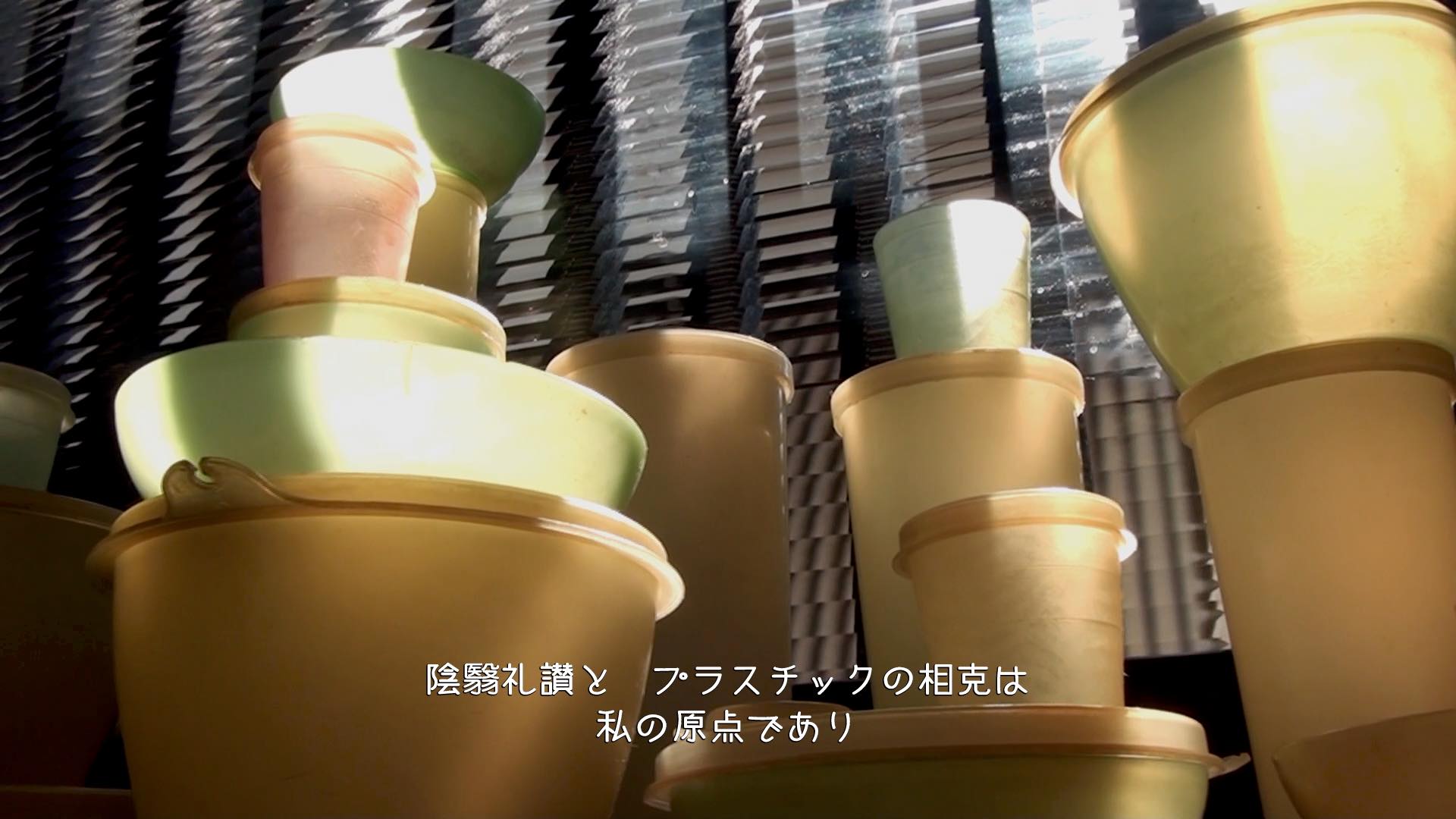
still from Plywood City Stories 2 (2018/2020)
The title of this solo exhibition is Lost Frontier.
The term “frontier” refers to untapped territories and borderline regions that used to exist in the age of imperialism. In this exhibition, it indicates Manchuria (called “Manshu” in the contemporary Japan), the birthplace of Ujino’s mother, who appears in the eponymous video, and more specifically, Antung (present-day Dandong), a city close to the border, where she was born and raised.
In his description of the “New Frontier” policy he advocated in 1960, then-President John F. Kennedy noted that the United States no longer had any geographical frontiers by the end of the 19th century (lost frontier = the completion of ethnic cleansing policies), and so characterized issues to be newly tackled in the 20th century (in areas including population, subsistence/longevity, education, housing, science/space) as “new frontiers.”
More than 60 years have since passed, and the limits are now already being reached in the erstwhile leading edges (= frontiers). The ambitions of people heading toward these areas are the same as in the case of the imperialistic lost frontiers. Ujino states that his own soul-searching over the 20th century is combined in the mix, which ends up having a bitter taste.
“The same goes for the ‘growth’ pursued by the Japanese government,” he adds. “Viewed in this light, even the electrical appliances in my works that were born of the advances in technology as a whole beginning with the Industrial Revolution and found their way into all of the world’s cities throughout the 20th century reached their pinnacle in the middle of JFK’s administration. I came to hear the memory of the lost frontiers of the future in the sound of The Rotators.”
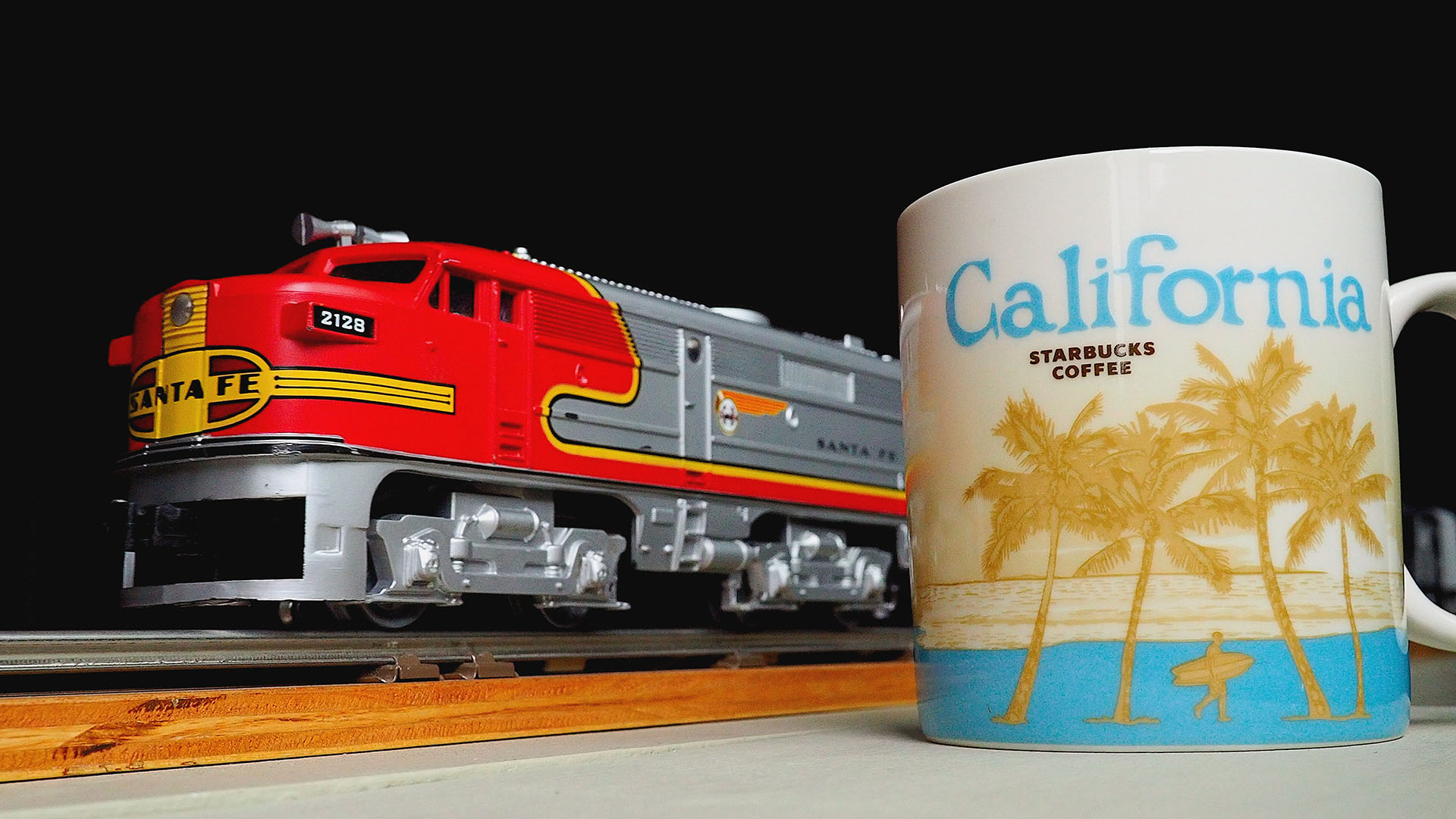
still from The Theme from Lost Frontier (2023)
The works shown by Ujino at this exhibition fall into the following three categories: 1) new video works, 2) works that are combinations of sound sculptures and videos, and 3) paintings from the series depicting sushi rolls of types not born in Japan.
1) Video works: The Theme from Lost Frontier and Lost Frontier
These are single-channel video works based on Home Movie, another video work that was made during the pandemic and shown at the Whose Stories? exhibition held at the Kamloops Museum in Canada in 2021.
As its title suggests, The Theme from Lost Frontier takes up geographical lost frontiers. It consists of images from photography of model trains, colonialist ads, tourism-type picture postcards, souvenir mugs, and other articles. A sound system of the same type as in Homy and The Rotators provides accompaniment in the form of guitar-strumming and industrial noise-type audio from the model train tracks and wheels.
The subject of Lost Frontier is Manchuria as described by Ujino’s mother, who was born and spent her adolescence there, as noted above. Upon Japan’s defeat in World War II, she became an evacuee and returned to Japan. Her personal experience in Manchuria as a member of a family that emigrated there directly sheds light on the relationship among Japan, the United States, and China (Manchuria), together with The Theme from Lost Frontier.
Ujino says that he is not a journalist and that the history related to him was the history he felt he could treat. He adds that he has taken this as a basic principle and tried to be true to it.
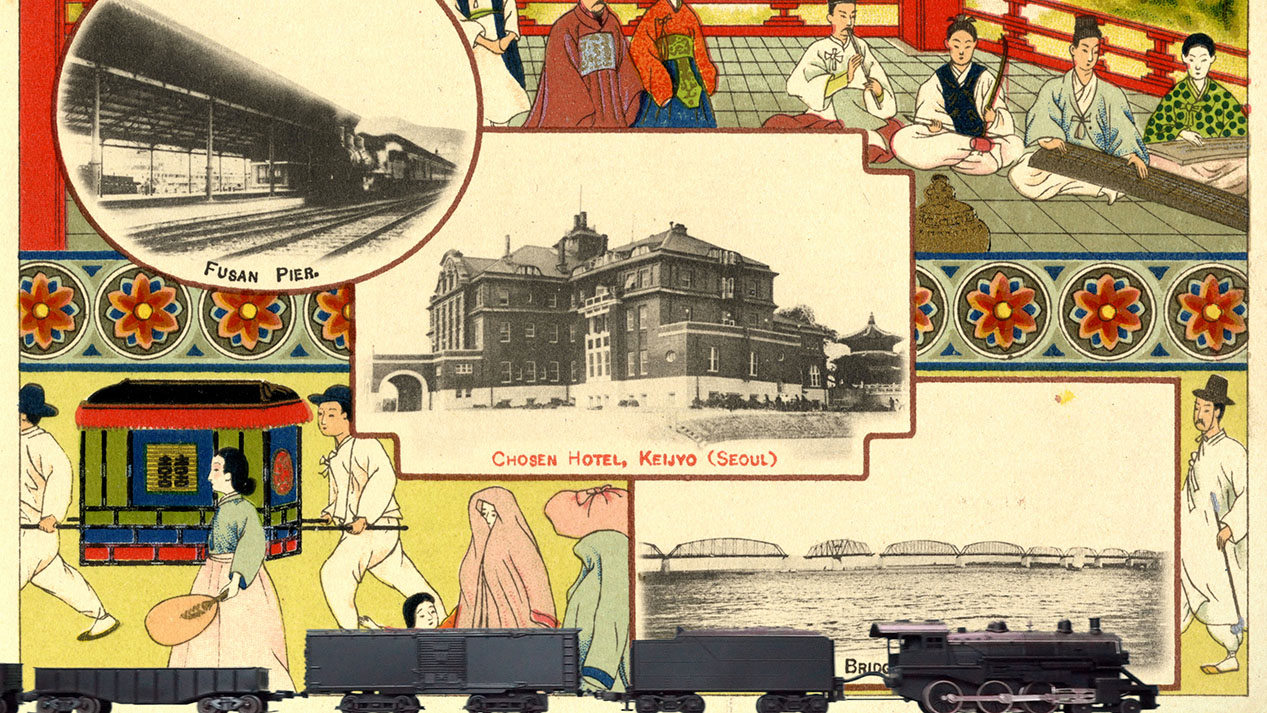
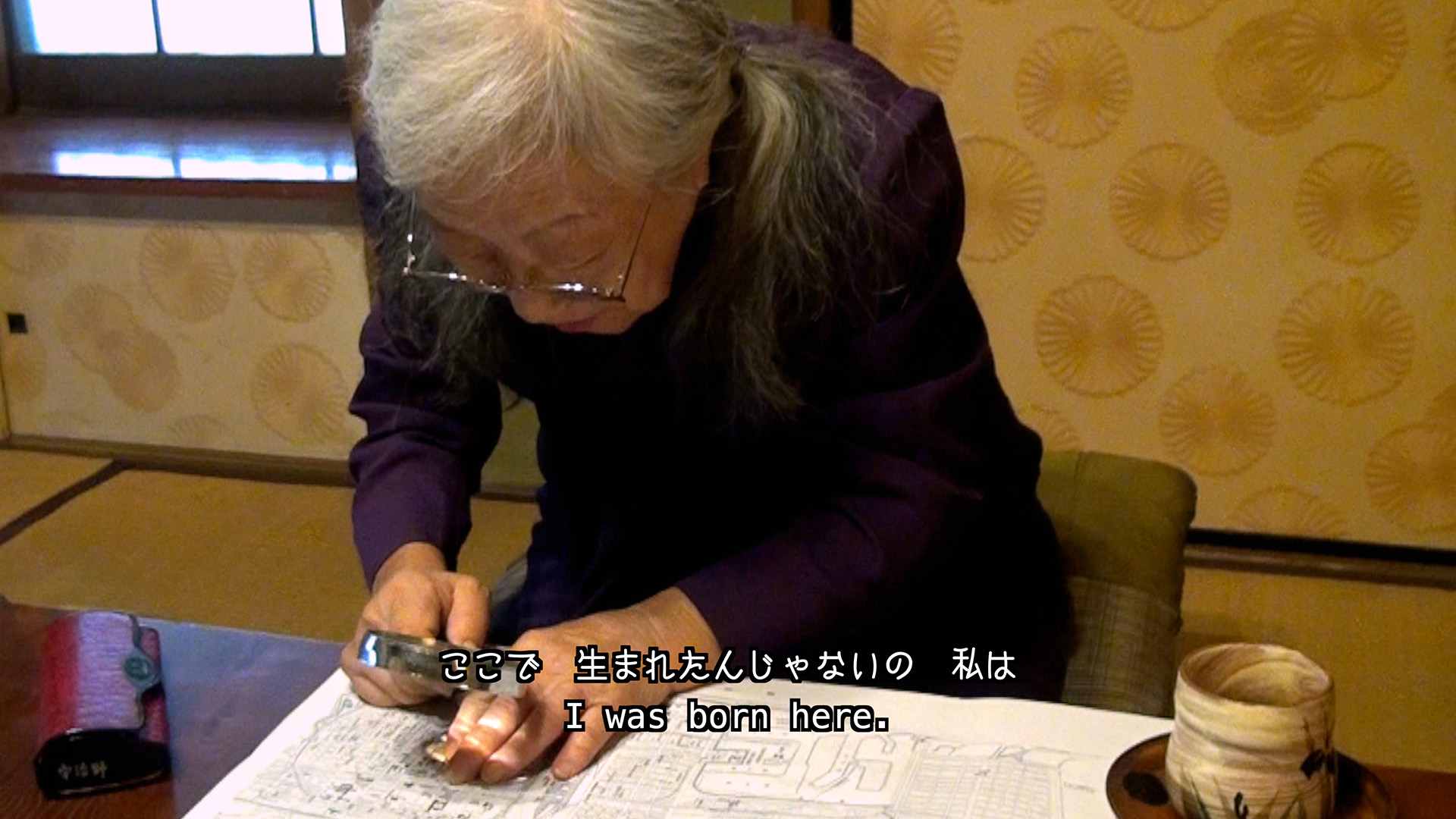
still from Lost Frontier (2023)
“The sound of the guitar in this video work was inspired by the old gunslinger series of movies I saw. This is because, when I see a Western, I am reminded of the story of my mother and her family in Manchuria, and the relationship between the conquering side and the conquered side. Both territories were crossed by railroads that no longer exist: the first Transcontinental Railroad in the States and the South Manchuria Railway. When my grandfather emigrated there in the early part of the 20th century, I believe Manchuria, too, was a sprawling, vast wilderness that neither China nor Russia knew how to manage – a no man’s land that attracted people like my grandfather as well as adventurous sorts out to make a fortune at a single stroke. I put the model train in there because railway construction went hand-in-hand with domination of territory in the modern era. I therefore view trains as a symbol of modern hegemony.”
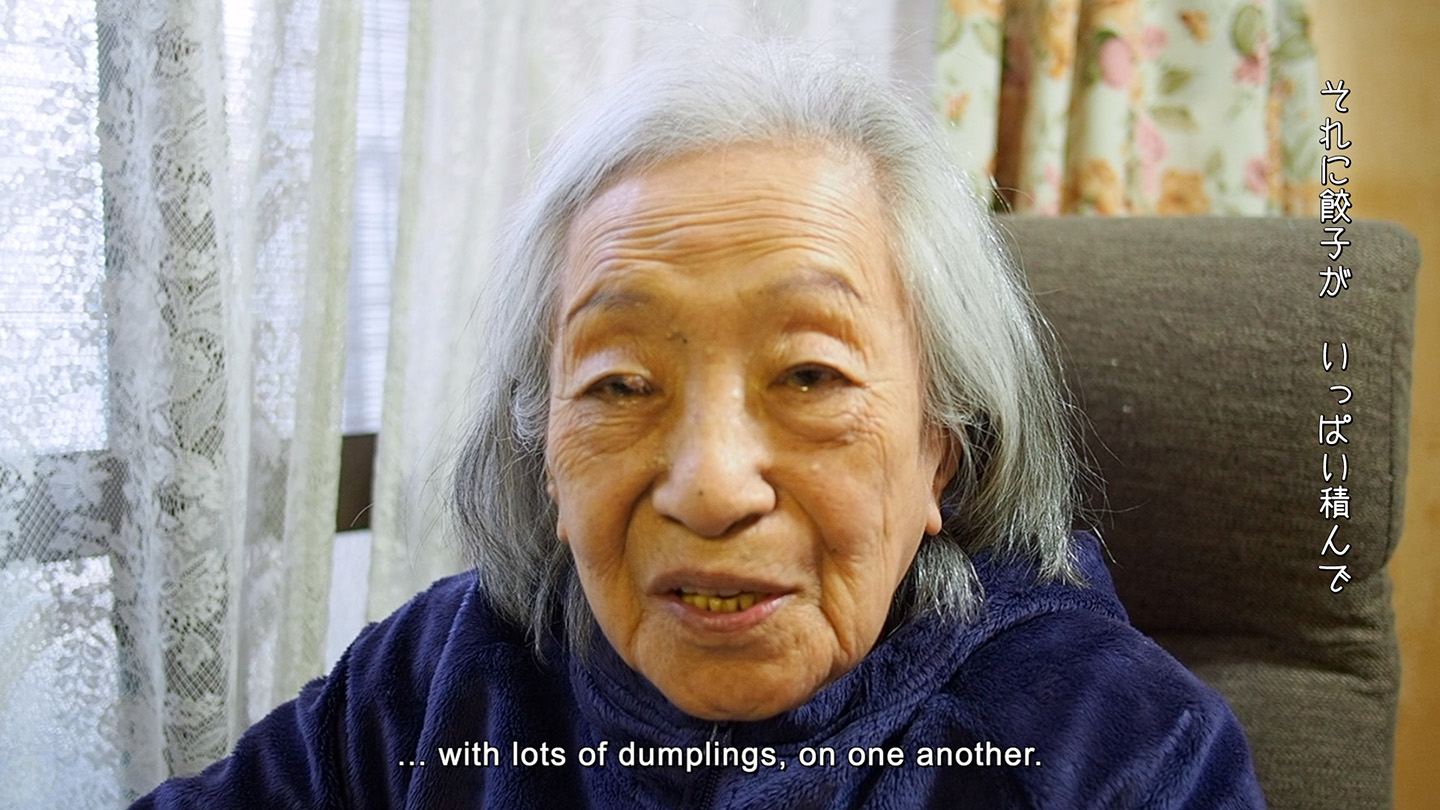
still from Homy & The Rotators (2023)
2) Homy & The Rotators
This is an experimental project which Ujino began in an attempt to integrate the respective temporal axes of The Rotators and a narrative video work initiated in 2017. The Rotators is a rhythm section which he has been working on since the early 2000s and was built by recombining mass-produced equipment of the 20th century with DIY technology.
Ujino’s mother, who turns 100 this year, talks about her memories of eating dumplings, her favorite food, in her native Manchuria, to the beat of a sound sculpture made of various consumer technology.
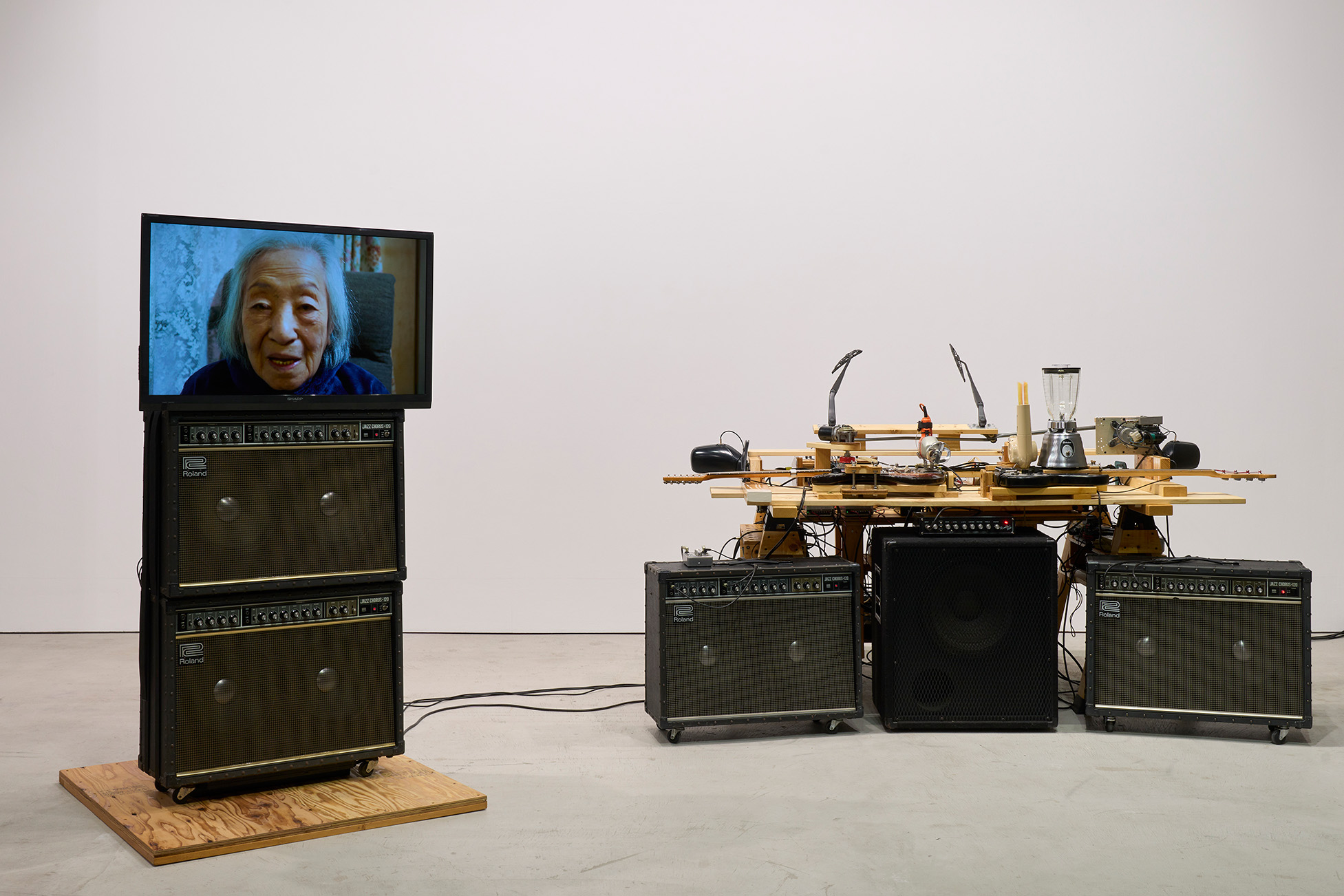
Homy & The Rotators (2023)
Installation (wood, electrical products, amplifiers for musical instruments, windshield wipers, door mirror, and other objects)
Photo: Osamu Sakamoto
3) A series of paintings of sushi rolls that did not originate in Japan
Japanese-born sushi rolls (makizushi) have been transformed in ways regarded by some as heretical, by flexibly incorporating local foodstuffs and customs. In this way, they have taken firm root in the dietary cultures of countries around the world. Ujino made paintings of the mode of accepting foreign cultures and unique metamorphoses associated with these changes, which he also treated in his Japan Series. The resulting works are both pop and kitsch representations of popular culture in a minimal style.
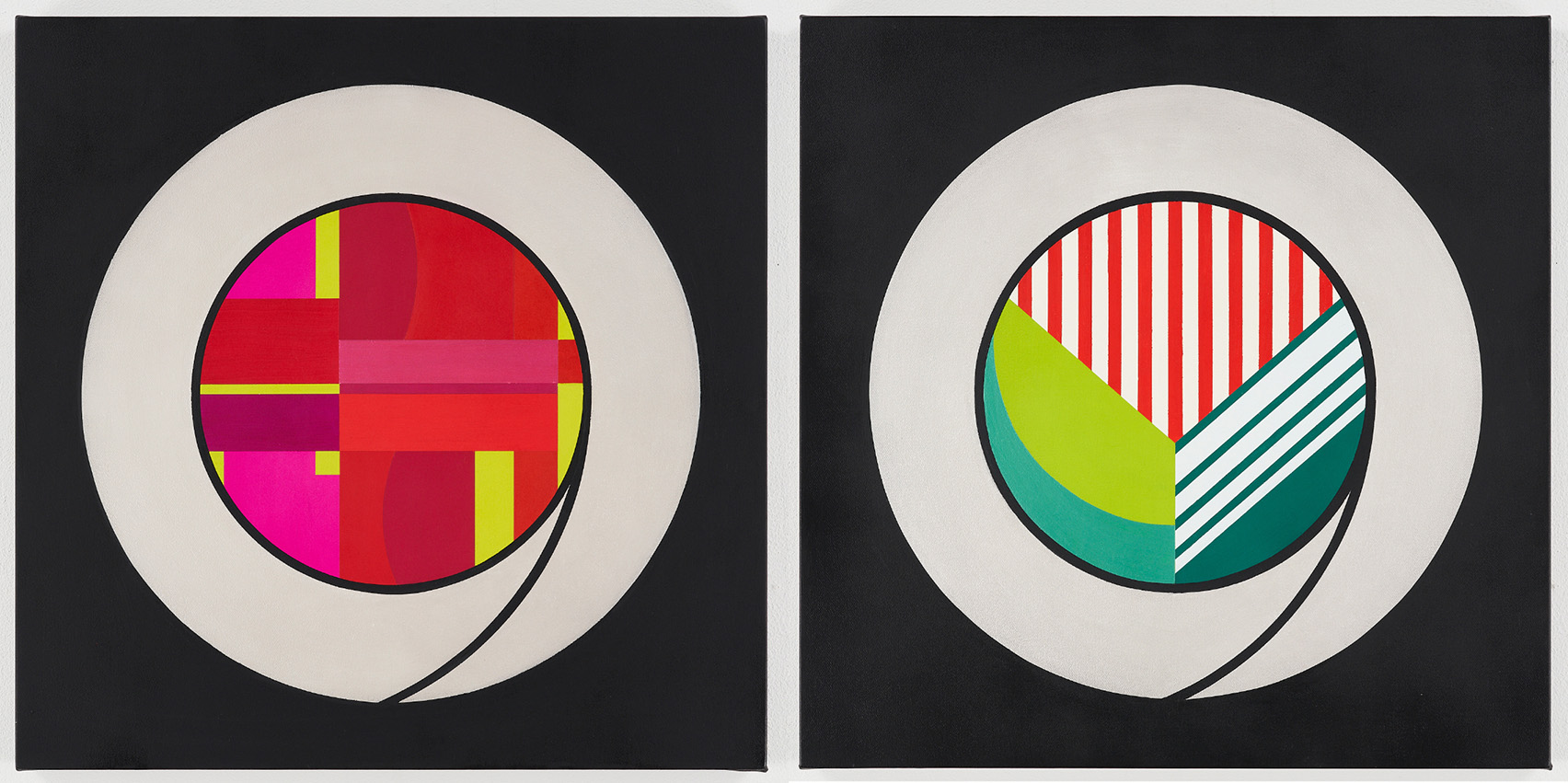
Left) Spicy Tuna Roll (2023) acrylic on canvas mounted panel
Right) California Roll (2023) acrylic on canvas mounted panel
This exhibition consists of highly personal experiences under the prewar colonialism of the 20th century, as well as fragments of images of merchandise that was mass-produced after the war and is still being manufactured in immense quantities, and related records etc. Amid the worldwide spread of this content through the workings of globalism, it is an attempt to connect Ujino’s personal experiences to the bigger picture of foreign policy history, and take a critical look at the present age from that vantage.
We are eagerly looking forward to seeing you at this long-awaited solo exhibition of works by Muneteru Ujino.
Installation view






